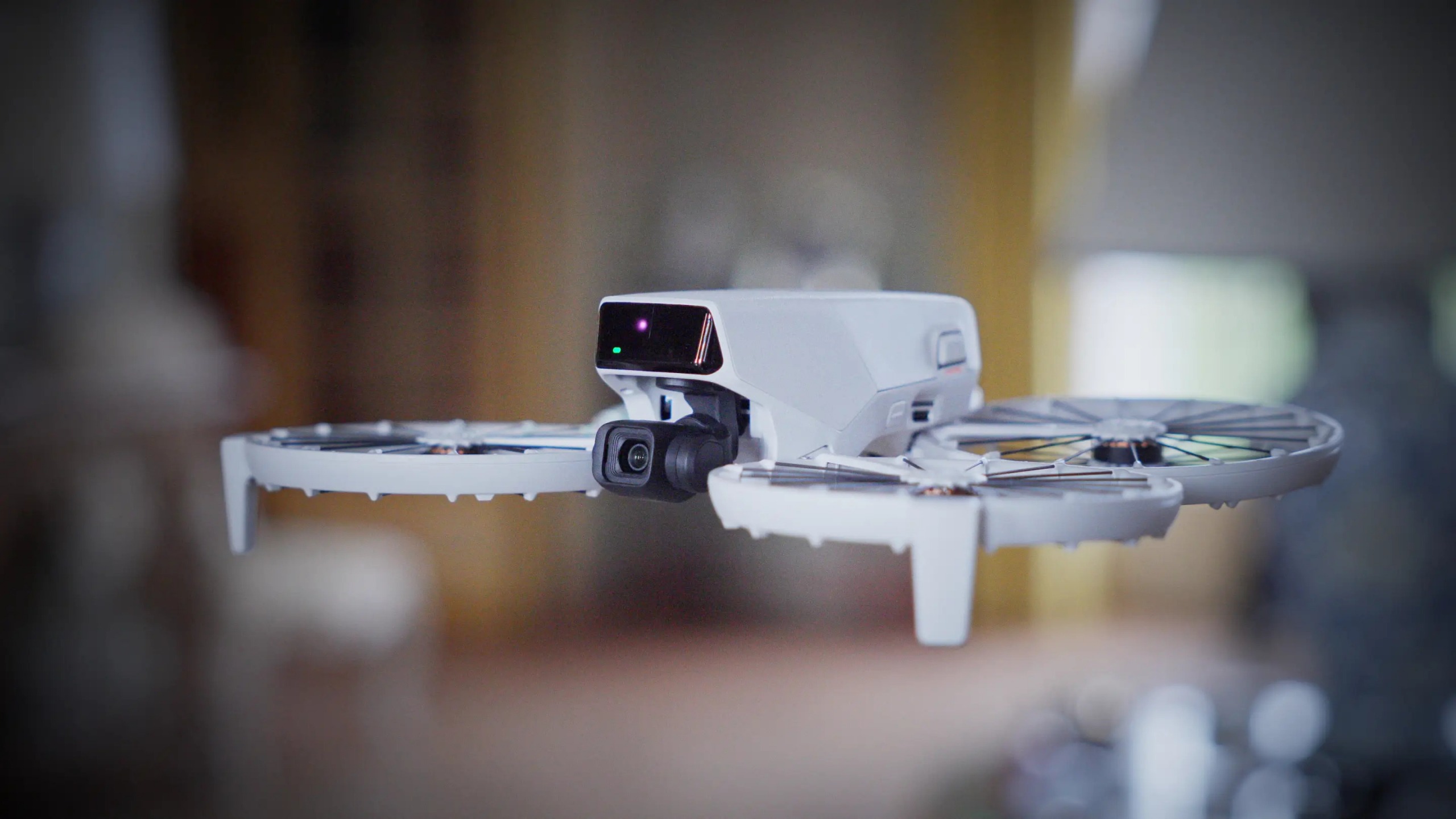After generating excitement with the $200 Neo, DJI is introducing another cutting-edge drone: the Flip. This model features a unique folding design and propellers encased within protective shrouds to enhance safety for those nearby. Additionally, it boasts advanced 3D infrared obstacle detection for tracking subjects and comes equipped with an extensive array of impressive functionalities.
Utilizing a camera from the Mini 4 Pro, the Flip is capable of capturing sharp 4K 60p video both indoors and outdoors with minimal risk. It offers several features appealing to vloggers, such as Direction Track and Quickshots, perfect for sharing on social media. The drone can be operated using DJI’s controllers, a smartphone, voice commands, or simply with a button press.
There is no need for a flying permit, and it’s conveniently priced at $439, which includes an RC-N3 controller. This positions it as a more budget-friendly option compared to many others available. To evaluate its potential for creators, I flew the Flip inside a historic castle, a 500-year-old home, and outdoors. Although it’s not flawless—particularly in windy conditions and with obstacles—it remains one of the most valuable drones for creators on the market.
### Design
The Flip sports a clever, user-friendly design where all four propellers fold neatly beneath the body, reminiscent of a spacecraft from Star Wars. DJI’s design choice allows for non-removable protective shrouds around the propellers, minimizing the risk of damage or injury during collisions. The drone incorporates large propellers to enhance performance while reducing noise, unlike the Neo, which has smaller, faster-spinning ones that create a high-pitched sound.
DJI ensured the overall weight of the Flip—including the battery and microSD card—stays under 250 grams by utilizing lightweight materials like carbon fiber. This makes it exempt from special flying permits, although it is still bulkier compared to the sleek HoverAir X1 Pro.
Although the Flip boasts superior battery life with a promised maximum flight time of up to 34 minutes (approximately 27 minutes in practical scenarios), it can be rapidly charged in about 35 minutes with an optional four-battery charger. It’s worth noting that the Flip has only 2GB of internal storage, necessitating an external memory card for use.
The Flip utilizes a dual sensor system that includes a 3D infrared sensor for forward obstacle avoidance and a downward vision sensor to help with landing stability. However, it lacks side and rear sensors. One minor drawback is that the propellers may catch on grassy surfaces during takeoff. Like the Neo, it’s designed for hand launches and comes equipped with a convenient button enabling automatic takeoff, along with various flight modes that can be activated via app, voice command, or manual controller input.
### Features and Performance
In “sport mode,” the Flip can reach speeds of up to 26 mph, slightly slower than the Mini 4 Pro’s performance. The drone handles well in moderate winds, but its lightweight nature can make it susceptible to stronger gusts. Its complete propeller protection, stability, and reduced noise levels allow for secure indoor flight in spaces filled with fragile items and people, making it a reliable choice for event professionals and content creators.
Ideal for newcomers, the Flip allows for easy hand launches and includes a feature called Direction Track, enabling the drone to automatically follow and film you. Flight modes designed for social media content include Dronie, Rocket, Circle, Helix, and Boomerang, though video quality in these settings is capped at 4K 30 fps.
Despite being less agile than the Mini 4 Pro, the Flip is easy to operate and serves as a stable filming platform. Care should be taken when flying over untextured surfaces, as they can interfere with the Flip’s sensors, leading to instability. In such cases, engaging sport mode may be necessary to bypass vision-based stability features.
Interestingly, the Flip does not support compatibility with DJI’s Goggles N3 and Motion 3 controller, as DJI primarily envisions it as a camera drone instead of one for acrobatics.
### Camera
The Flip’s camera system marks a significant improvement over the Neo. It features a larger 1/1.3-inch 48-megapixel sensor and a wide-angle F/1.7 lens, analogous to that of the Mini 4 Pro, which enables it to capture crisp, noise-free video in favorable lighting conditions. This drone excels at shooting 4K video up to 60 fps, and even offers a slow-motion mode at 100 fps.
Moreover, the Flip supports 10-bit D-LogM video for enhanced dynamic range in bright conditions and can take RAW (DNG) photos at either 12MP or 48MP. The video quality surpasses that of the Neo, making the Flip a superior option for low-light or poorly lit environments. However, while other DJI devices like the Air 3S and Mavic 4 offer higher quality images due to larger sensors, the difference is less significant in optimal lighting.
The Flip incorporates a three-axis gimbal that delivers smooth video footage, even in windy conditions. You have the option to select Follow mode, which maintains a level camera during banking maneuvers, or FPV mode, which allows for a more immersive experience. Overall, the video remains stable during abrupt movements, contrasting with the occasional jitters seen in footage from the HoverAir X1 Pro.
### Conclusion
The Flip signifies a noteworthy shift in design philosophy for DJI. Unlike traditional drones, it empowers creators to film in indoor spaces and crowded environments with commendable video quality, all for an accessible price point of $439, notably lower than the Mini 4 Pro’s price of $759. Despite its advantages, the Flip has some drawbacks, including its limited maneuverability and challenges in windy conditions, along with the absence of significant obstacle avoidance features in intelligent flying modes.
If portability, subject tracking, and obstacle detection are priorities for you, the HoverAir X1 Pro presents a more advantageous option. Conversely, those prioritizing battery performance, superior video smoothness, and trusting a well-established brand may prefer the Flip. Regardless, it’s refreshing to see competitive offerings in a sector typically dominated by DJI.
